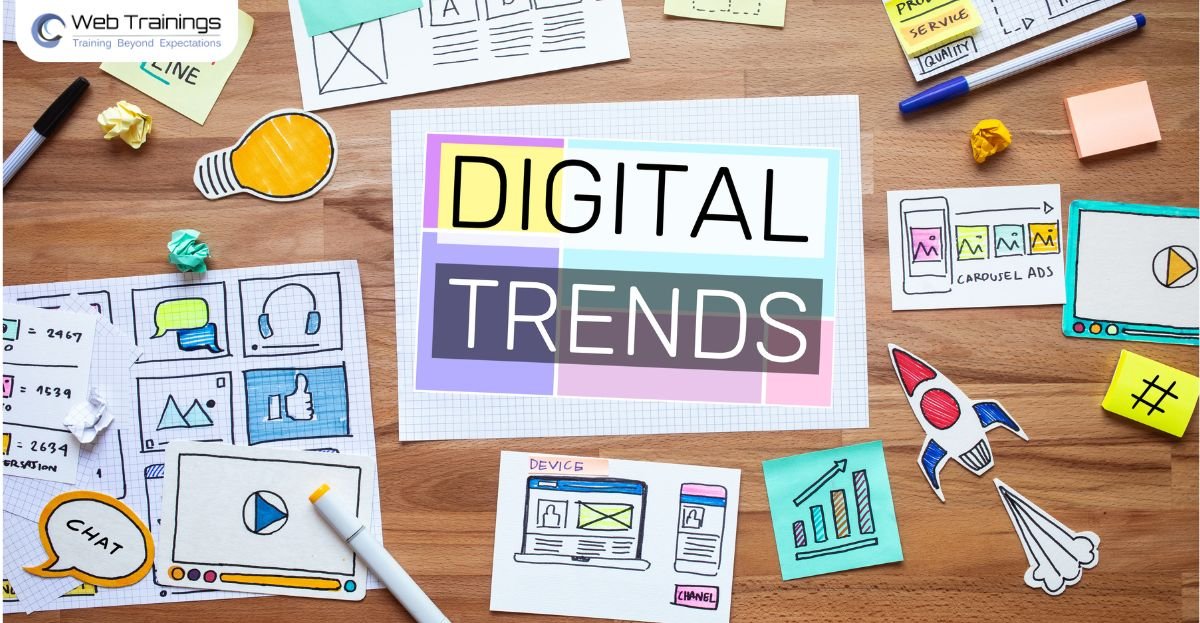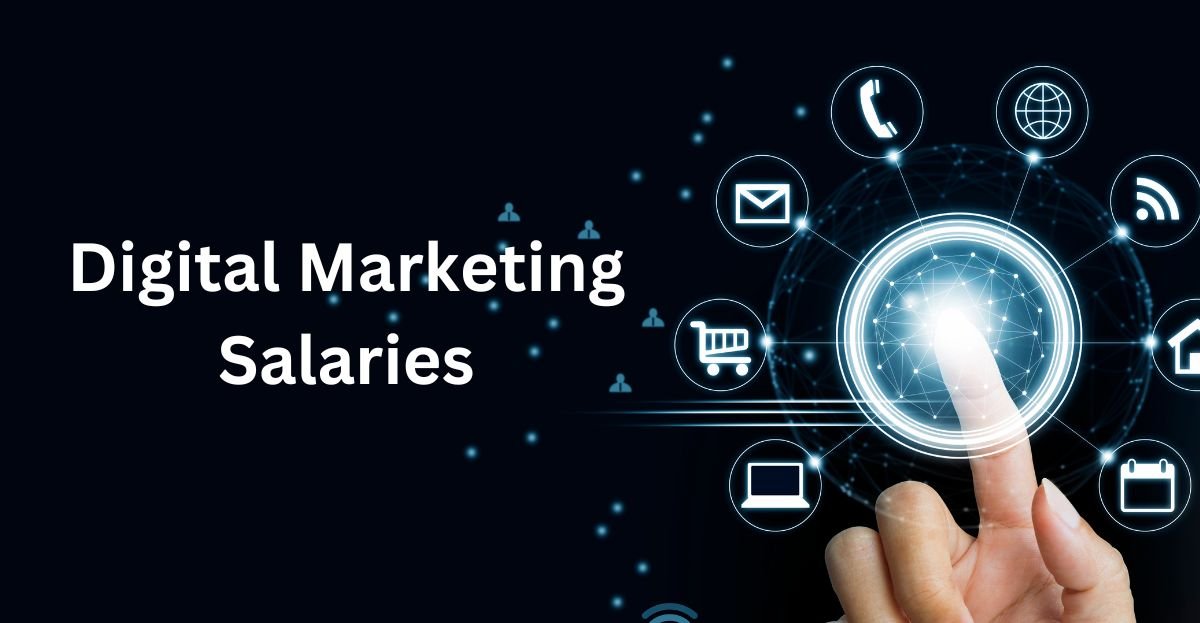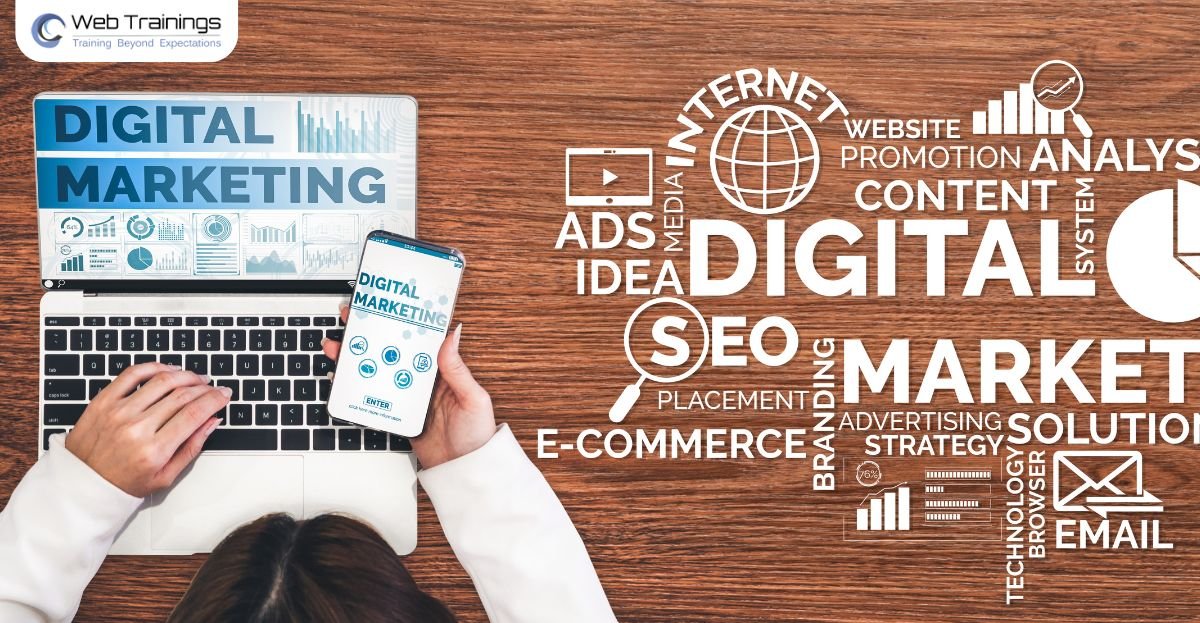Are you curious about what are the Digital Marketing trends in 2025? Has technology made digital marketing more sophisticated and easier to rely on when building your brand? In this post, we’ll be exploring some of the top digital marketing trends in 2025, with a particular focus on Influencer Marketing, Artificial Intelligence and Machine Learning, ChatGPT, Short Video Content, and Web Stories. Read on to discover more!
Digital Marketing Trends in 2025
- Influencer Marketing
- AI & Chatbots
- Short video content
- Social Shopping
- Zero Click Searches
- Rise of AI Search Engines
1. Influencer marketing and its trends in 2025
In this day and age, it’s crystal clear that influencer marketing has taken the advertising world by storm. It’s been used to great effect in some of the most massive marketing campaigns in history, proving its worth time and time again. What’s more, with the ever-growing influence of social media stars, it’s safe to say that influencer marketing is not just a passing fancy – it’s here to stay.
According to Statista’s projections, the global influencer market is set to explode, reaching $15.2 billion in 2022 and an astounding $22.2 billion by 2025. This is a testament to the popularity and potential of influencer marketing, which is now an integral part of marketing strategies for countless brands around the world. to fully harness the power of influencer marketing, it’s crucial to stay up to date with the latest trends and emerging social media platforms and tools.
Every year, new opportunities for engagement and unique trends come to light, and being ahead of the curve is critical to maximizing the effectiveness of influencer marketing campaigns. Don’t miss out on the enormous potential of influencer marketing – stay current and ride the wave of success.
What stats say:
When it comes to measuring success on social media, engagement rates are a key metric that brands should pay attention to. So, let’s take a closer look at what recent data is telling us about engagement rates across various platforms. First off, TikTok is still a popular platform with an impressive average engagement rate of 4.25% calculated by followers and 5.10% by views.
While this figure has been slowly decreasing by about 28%, TikTok is still a great platform for brands to connect with their audience and build brand awareness. Over on Instagram, the average engagement rate is at 0.60%, and it’s continually decreasing.
However, if you’re looking to generate more engagement on the platform, it’s worth noting that Reels, the short-form video feature, currently outperforms other post formats by generating double the engagement. Facebook’s engagement rate is relatively low, averaging at 0.15%. However, the platform remains an important channel for brands to connect with their audience.
If you’re wondering which industries perform well on social media, the beverages industry leads on both TikTok and Facebook, while the food industry performs well on Instagram.
On Twitter, the arts and crafts industry takes the lead.with an engagement rate of 0.05% While engagement rates are an important metric, it’s crucial to keep in mind that they are just one piece of the puzzle. Brands should also consider other key performance indicators to get a comprehensive view of their social media success.
So, keep creating amazing content, stay on top of the latest trends, and use engagement rates as one of many tools to measure your social media success.
Strategic Approach to Influencer Marketing
In today’s digital age, businesses have turned to influencer marketing as a powerful tool to connect with their target audience. However, to achieve optimal outcomes, a strategic approach is essential. This article will explore the critical factors that businesses need to consider when implementing an influencer marketing campaign.
Select the Right Influencers
One of the most crucial elements of influencer marketing is choosing the right influencers to partner with. It’s vital to select individuals who fit your brand’s niche and values to ensure they create content that resonates with your target audience. Authenticity is paramount to the success of an influencer marketing campaign, so it’s essential to avoid collaborations that appear forced or inauthentic.
Staying Up-to-Date with Trends
Another crucial aspect of influencer marketing is keeping up with the latest social media and influencer trends. As new platforms emerge, like TikTok, it’s necessary to leverage these channels to reach a broader audience and create trendy and relevant content. However, businesses must be cautious before jumping on the bandwagon and ensure that the platform aligns with their brand’s values and messaging.
The Rise of Micro and Nano-Influencers
In addition to selecting the right influencers and staying up-to-date with trends, micro and nano-influencers have become increasingly popular among brands. Although they may have a smaller following, they often have a highly engaged and loyal audience. Collaborating with micro and nano-influencers can help generate higher average engagement rates for your brand.
Creative Freedom for Influencers
Finally, businesses must provide influencers with creative freedom when promoting their brand. Allowing influencers to express their unique perspectives and voices can resonate better with their audience, leading to a more successful campaign. Remember, influencer marketing isn’t just about selling products, but building long-lasting relationships with the audience.
2. AI & Chatbots
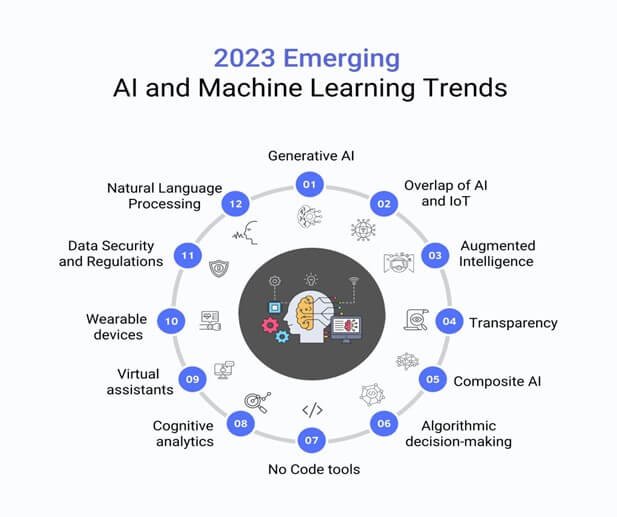
As we are adopting new technical innovation, we firmly believe that Machine Learning is an indispensable facet of contemporary technology. It has become progressively ubiquitous in a wide array of industries such as healthcare, finance, e-commerce, and more. This manuscript will expound on the top Machine Learning trends we expect to witness in 2024. We will delve into how enterprises are utilizing AI in their operations and provide a glimpse into the future of this technology.
Enhancements in Natural Language Processing (NLP):
Natural Language Processing is the domain of Machine Learning that concerns the communication between humans and computers through natural language. With advancements in NLP, we envisage that machines will comprehend human speech more precisely than ever before. We anticipate that in 2024, NLP will be extensively employed in voice recognition systems, chatbots, and virtual assistants.
The Emergence of Explainable AI:
Explainable AI (XAI) pertains to the capacity of machines to explain the reasoning behind their decisions in a manner that humans can comprehend. In 2025, we anticipate XAI to become more pervasive as organizations demand transparency in the decision-making procedures of their AI systems. XAI will aid in establishing trust in AI-powered systems, enabling them to be used in crucial applications such as healthcare and finance.
Federated Learning:
Federated Learning is a novel model in Machine Learning where instead of gathering data in a centralized location, data is retained on individual devices. This approach allows for superior privacy and security while enabling models to be trained on voluminous datasets. In 2024, we expect Federated Learning to gain more currency as it provides a method to train models without jeopardizing privacy.
Edge Computing:
Edge Computing refers to the process of processing data at the edge of the network rather than in the cloud. In 2025, we anticipate that Edge Computing will be utilized more extensively in Machine Learning applications, particularly in IoT devices. This will result in faster response times and reduced latency, facilitating real-time decision making in critical applications.
The Ascendance of Reinforcement Learning:
Reinforcement Learning is a type of Machine Learning that involves an agent learning to interact with an environment by executing actions and receiving rewards or penalties based on their actions. In 2025, we expect Reinforcement Learning to gain more traction as it has proven to be effective in applications such as robotics, game-playing, and autonomous vehicles.
Digital Marketing Course in Hyderabad – Web Trainings Academy
Looking to build a successful career in digital marketing? Web Trainings Academy, a leading institute in Hyderabad, offers a comprehensive Digital Marketing Course designed for students, job seekers, entrepreneurs, and professionals. With 15+ years of expertise, we provide practical training, live projects, and placement support to help you master SEO, Google Ads, Social Media Marketing, and more.
Join Hyderabad’s best digital marketing training institute and gain the skills needed to thrive in the competitive digital world. Enroll today and take your career to the next level! 🚀
The Growth of ChatGPT
ChatGPT is an artificial intelligence-based language model that has revolutionized the way digital marketing is done. It can generate human-like text and understand human language, making it a powerful tool for creating content, analyzing data, and improving customer experience.
As digital marketers, we are always looking for ways to improve our strategies and gain a competitive advantage. ChatGPT can help us achieve this by providing valuable insights and data-driven solutions that can lead to higher conversions, increased engagement, and improved customer satisfaction.

How ChatGPT is Impacting Digital Marketing
Analysts have reported that ChatGPT, the renowned AI chatbot, has achieved an impressive milestone by garnering 100 million users within just two months of its launch. According to data firm Similarweb, ChatGPT received approximately 590 million visits in January, with 100 million of those visits being unique users. Investment bank UBS analysts noted that this growth rate is exceptional for a consumer application. According to a note from UBS analysts, reported by Reuters, after 20 years of observing the internet space, they cannot recall a faster acceleration in the adoption rate of a consumer internet app than what ChatGPT has achieved.”
ChatGPT is making waves in the digital marketing world with its ability to generate high-quality content that is relevant, engaging, and SEO friendly. It can analyze data and provide insights on customer behavior, preferences, and trends, which can help us create targeted campaigns and personalized experiences.
➢ Time Saving:
One of the biggest advantages of using ChatGPT is that it can save time and resources by automating tasks that are repetitive and time-consuming. For instance, it can generate product descriptions, blog posts, social media content, and email marketing campaigns, freeing up our time to focus on other important tasks.
➢ Humanize Conversational Chatbots:
Another way ChatGPT is impacting digital marketing is by improving customer experience. It can provide real-time support and assistance, answer FAQs, and address customer concerns, which can lead to higher satisfaction and loyalty.
➢ Audience Research:
Digital marketers can expand their comprehension of their target audience through the practice of audience research. This endeavor requires the thorough examination of substantial amounts of data to pinpoint shared characteristics, behaviours, and preferences among customary consumer segments. By obtaining perspicacity into the wants and needs of their target audience, digital marketers can fine-tune their marketing strategies to more effectively captivate their interest.
➢ Social Media and ChatGPT:
Social media and other comparable platforms offer opportunities for customer involvement, and conversational agents like ChatGPT can be programmed to provide customer assistance, address common queries, and even make product recommendations. These conversational agents can aid digital marketers in cultivating favourable customer relationships and elevating customer contentment.
DeepSeek is the new game changer in 2025

DeepSeek is making waves in the AI chatbot space by introducing innovative technologies and approaches that are reshaping how conversational AI works. Their advancements are not only improving the capabilities of chatbots but also making them more efficient, user-friendly, and impactful. Here’s how DeepSeek is changing the game:
1. Smarter Conversations with Advanced NLP
DeepSeek uses state-of-the-art Natural Language Processing (NLP) to help chatbots understand and respond to human language more effectively. This means chatbots can handle complex questions, pick up on subtle nuances, and even understand cultural references, making conversations feel more natural and human-like.
2. Personalized and Context-Aware Interactions
One of DeepSeek’s standout features is its focus on personalization. Their chatbots remember user preferences and past interactions, which allows for more tailored and meaningful conversations. This context-awareness ensures that users don’t have to repeat themselves, creating a smoother and more engaging experience.
3. Multimodal Capabilities for Richer Interactions
DeepSeek is pushing boundaries by enabling chatbots to process not just text but also images, voice, and even video. For example, a user could upload a photo, and the chatbot could analyze it to provide relevant information or suggestions. This opens up new possibilities for applications in areas like customer support, education, and entertainment.
4. Real-Time Learning and Adaptation
DeepSeek’s chatbots are designed to learn and adapt in real time. They can incorporate new information and user feedback on the fly, ensuring they stay up-to-date and continuously improve. This adaptability is especially useful in fast-changing environments where user needs evolve quickly.
5. Ethical and Transparent AI
DeepSeek is committed to ethical AI practices. Their chatbots are built with transparency in mind, clearly communicating their capabilities and limitations. They also include safeguards to prevent bias and misuse, helping to build trust with users and set a higher standard for responsible AI development.
6. Industry-Specific Solutions
DeepSeek is creating specialized chatbots tailored to specific industries like healthcare, finance, and retail. These chatbots are designed to address unique challenges and provide more accurate, relevant assistance. For instance, a healthcare chatbot could help with symptom checking or appointment scheduling, while a finance chatbot might offer personalized investment advice.
7. Scalability and Seamless Integration
DeepSeek’s chatbot solutions are built to scale, making them suitable for businesses of all sizes. They can easily integrate into existing systems and workflows, ensuring a smooth user experience without disrupting operations. This scalability allows businesses to handle growing interaction volumes without compromising performance.
8. Enhanced User Experience
DeepSeek prioritizes user-centric design, making their chatbots intuitive and easy to use. Features like proactive suggestions and predictive typing make interactions faster and more efficient, while the overall design ensures a pleasant and engaging experience for users.
9. Cost-Effective Automation
By automating tasks like customer service, DeepSeek’s chatbots help businesses save time and reduce costs. This makes advanced AI technology accessible to a wider range of organizations, from small startups to large enterprises, without requiring significant investments in human resources.
10. Global Reach with Multilingual Support
DeepSeek’s chatbots are equipped to communicate in multiple languages, making them ideal for businesses with a global audience. This multilingual capability breaks down language barriers and expands the reach of AI-driven services, allowing companies to connect with customers worldwide.
In a nutshell, DeepSeek is redefining what AI chatbots can do. By combining advanced NLP, personalization, multimodal capabilities, ethical practices, and industry-specific solutions, they’re setting new benchmarks for chatbot performance and user experience. Whether it’s for businesses looking to streamline operations or users seeking smarter, more responsive interactions, DeepSeek is paving the way for a more intelligent and connected future.
3. Growth of Short Videos
Short video content is quickly becoming the go-to strategy for digital marketers, as it offers a high return on investment and engages audiences with ease. TikTok, Instagram, YouTube, and Facebook are leading the charge, with their features like Instagram Reels and YouTube Shorts paving the way for the future of social media marketing.
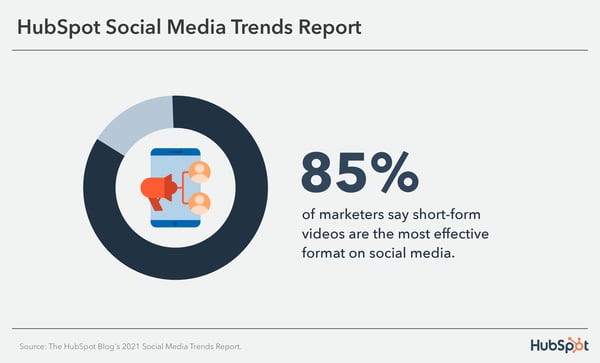
What Statistics shows and Its Trend?
According to a recent study by HubSpot, short video content is gaining immense popularity, as it helps businesses reach a larger audience and boost engagement rates. Instagram stories, in particular, have become a favourite among marketers, as they allow brands to showcase their products and services in a creative and interactive way.
In 2024, the trend towards short video content is only expected to grow, with Instagram reels playing a significant role in helping brands reach new audiences. By leveraging this feature, businesses can increase their discoverability and potentially reach up to 200 million viewers through the Explore page.
Short-form video content is poised to be the breakout star of social media marketing in 2025, with an overwhelming majority of marketers planning to invest more in it than any other format. According to recent studies, 33% of social media marketers are planning to prioritize short-form video content in their upcoming campaigns.
This trend is only set to continue, with a staggering 58% of those already using short-form video content indicating that they plan to increase their investment in it in 2024. Furthermore, 32% of marketers have no intention of decreasing their investment in this format, indicating that short-form video content is quickly becoming a staple in the world of digital marketing.”
The reasons for the popularity of short-form video content are clear. With consumers’ attention spans growing shorter by the day, short-form video content offers a quick and engaging way to communicate brand messaging. This format is easily consumable and shareable, making it an ideal tool for businesses looking to boost their online presence.
Short video content also offers a unique opportunity for B2B and B2C brands to connect with their audience in a more authentic and less curated way. This approach allows companies to showcase their work culture, employees, and products while answering frequently asked questions and providing behind-the-scenes glimpses of their operations.
If you’re a B2B or B2C brand looking to leverage short video content in your marketing strategy, there are several approaches you can take. Creating branded videos to build awareness, producing testimonial videos to showcase customer satisfaction, or offering behind-the-scenes peeks at your company are all effective ways to engage with your audience and drive conversions.
4. Social Shopping: The Future of Online Shopping
Social shopping refers to the process of buying products directly through social media platforms or using social networks to influence purchasing decisions. Unlike conventional e-commerce, where consumers visit standalone websites, social shopping enables users to browse and purchase products within their favorite social media apps.
How Does Social Shopping Work?
Social shopping leverages social media platforms’ built-in shopping features and user-generated content to facilitate purchases. Here’s how it works:
- Shoppable Posts & Tags – Platforms like Instagram and Facebook allow brands to tag products in posts and stories, leading users to product pages for direct purchases.
- Live Shopping Events – Brands host live shopping sessions on platforms like TikTok and Facebook, where influencers and sellers showcase products in real time.
- Influencer & User-Generated Content (UGC) – Consumers trust reviews and recommendations from influencers and peers, making UGC a powerful tool in social shopping.
- AI-Powered Recommendations – AI-driven algorithms suggest products based on user preferences and browsing behavior, enhancing personalized shopping experiences.
- In-App Checkout – Social platforms now offer in-app checkout options, eliminating the need to visit external websites for completing purchases.
Why Social Shopping is Gaining Popularity
Social shopping is growing rapidly due to several key factors:
- Convenience – Users can browse, discover, and buy products without leaving their favorite social apps.
- Engagement & Trust – Consumers rely on peer reviews, influencer recommendations, and real-time interactions before making purchase decisions.
- Visual Appeal – Platforms like Instagram and Pinterest provide a visually immersive shopping experience, enhancing product discovery.
- Personalization – AI-driven product suggestions make shopping more relevant to individual users.
Popular Social Shopping Platforms
- Instagram Shopping – Features like product tags, shoppable reels, and Instagram checkout make purchasing seamless.
- Facebook Marketplace & Shops – Businesses can set up digital storefronts to sell directly to Facebook users.
- Pinterest Shopping – Buyable pins and shopping recommendations make Pinterest a great platform for visual commerce.
- TikTok Shop – TikTok’s live shopping and shoppable ads create a unique, interactive shopping experience.
- YouTube Shopping – Creators can tag products in their videos and livestreams, turning content into shoppable experiences.
The Future of Social Shopping
Social shopping is poised for massive growth, with advancements in AI, AR/VR, and blockchain technology enhancing user experiences. Future trends include:
- Augmented Reality (AR) Shopping – Virtual try-ons for fashion and beauty products.
- AI-Powered Virtual Assistants – Personalized recommendations and customer service through chatbots.
- Cryptocurrency & NFTs in Shopping – Decentralized transactions and digital collectibles.
5. The Rise of Zero-Click Searches & Featured Snippets
What Are Zero-Click Searches?
Zero-click searches occur when users find answers directly on the search engine results page (SERP) without clicking on any website. These are often powered by featured snippets, knowledge panels, or instant answers provided by Google.
Why Are They Important?
- Increased Visibility – Websites that rank for featured snippets gain prominent placement at the top of search results.
- Enhanced User Experience – Users get quick and relevant information without navigating through multiple sites.
- Voice Search Optimization – Many voice assistants, like Google Assistant and Alexa, pull answers directly from featured snippets.
How to Optimize for Zero-Click Searches
- Use Structured Data Markup – Implement schema markup to help search engines understand your content.
- Answer Questions Directly – Provide concise, informative answers to common queries within your content.
- Utilize Lists & Tables – Google often selects bullet points and tables for featured snippets.
- Optimize for Long-Tail Keywords – Target question-based and conversational queries relevant to your audience.
Challenges of Zero-Click Searches
While zero-click searches enhance visibility, they can reduce website traffic since users obtain information without visiting a site. Businesses must adapt by optimizing content for conversions within featured snippets and ensuring brand recognition remains strong.
6. Rise of AI Search: Transforming the Way We Find Information
Search engines have been the backbone of the internet for decades, helping users discover information quickly. However, with the rise of artificial intelligence, search is undergoing a massive transformation. AI-powered search engines are making information retrieval smarter, faster, and more personalized than ever before.
How AI is Changing Search
Traditional search engines rely on keyword matching and ranking algorithms to display results. AI-powered search, on the other hand, leverages machine learning, natural language processing (NLP), and generative AI to understand user intent and provide more relevant responses. Here’s how AI is reshaping search:
- Conversational Search & Chatbots
Instead of typing specific keywords, users can now interact with AI chatbots that provide direct, context-aware answers. Tools like ChatGPT, Google Gemini, and Perplexity AI are revolutionizing search by delivering human-like responses rather than just listing links. - Personalized & Contextual Results
AI algorithms analyze user behavior, search history, and preferences to deliver highly relevant results. This personalization makes search more efficient, as AI understands what a user is truly looking for, even when queries are vague. - Multimodal Search (Text, Voice, and Images)
With AI, search is no longer limited to text. Users can now search using voice commands, images, and videos. Google Lens, for example, allows people to search by snapping a picture, making AI search more accessible and interactive. - AI-Generated Summaries & Direct Answers
Instead of navigating through multiple links, AI-powered search engines generate concise summaries of the most relevant information. Google’s Search Generative Experience (SGE) and Bing AI are already implementing this, saving users time and effort. - Enhanced SEO Strategies
As AI-driven search engines prioritize context, quality, and user intent, SEO strategies must evolve. Businesses now need to focus on creating high-value, well-structured, and AI-friendly content to stay visible in search results.
The Future of AI Search
The rise of AI search is just the beginning. In the future, AI-driven assistants will anticipate user needs, conduct complex research, and even provide real-time insights across various industries. As AI search continues to evolve, businesses and content creators must adapt by embracing AI-optimized content strategies.
Conclusion:
Digital marketing trends in 2025 are expected to be heavily reliant on AI and machine learning, influencer marketing, ChatGPT, short video content, social shopping and AI Search engines. These trends will open new opportunities for businesses to reach and engage with their target audiences and increase their online presence. As businesses continue to focus on adapting and using the latest digital marketing trends in 2025, the future of digital marketing looks promising.
